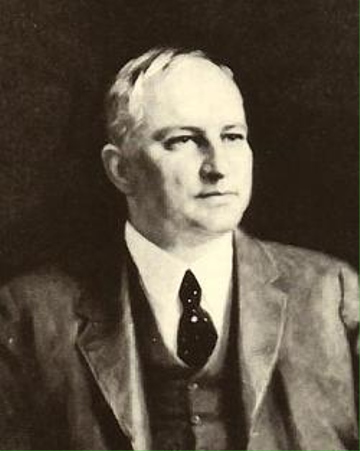Albert, came to work for Studebaker as Treasure when Studebaker was Incorporated and went public, in February of 1911. Prior to that date Studebaker was known as “Studebaker Brothers Manufacturing Company” and was privately owned.
Erskine, saddled with personal debt and health problems, killed himself on July 1, 1933, at the age of 62, accused of the financial mismanagement which had forced Studebaker into bankruptcy in March of 1933.
(For more information on the Studebaker bankruptcy, see the article “STUDEBAKER – THE 1933 BANKRUPTCY” on this website).
The early days:
Born in Huntsville, Alabama, on January 24th, 1871, to an influential southern family whose fortunes had been decimated by the Civil War. He attended public school in St. Louis, Missouri and at age of 15 went to work as an office boy with the Mobile and Ohio railroad. By 1898, he had worked his way up to chief clerk and later general auditor of the American Cotton Company. When American Cotton went into receivership, he landed a job as Treasure of Yale and Towne Company, and in 1910 became vice president of Underwood Typewriter, all this before coming to Studebaker in 1911 as Treasure. In 1913 Erskine became vice president of Studebaker, and in 1915 was made president, when Frederick Fish (Son-in-law of J.M. Studebaker) became Chairman of the Board, and J.M. Studebaker was named honorary president. Ref: Studebaker The Complete Story by William A. Cannon & Fred K. Fox
Erskine in the Twenties:
Under Erskine’s early leadership, Studebaker prospered, until World War I, broke out, with sales and profits declining only during 1917 & 1918. However, sales and profits rebounded during 1919 and for the next seven years, profits consistently exceeded ten percent of sales. Many records were recorded during the years leading up to the great depression, which started with the market crash of 1929. Among these were “all-time sales peak for Pre-World War II years of $157 Million” in 1928; “most car sold — 145,167” in 1923; “greatest net income — $18,342,223“ in 1923“; and “largest dividend paid — $10,423,088” in 1925. While most auto makers had sales and profit declines in the 1920, Studebaker’s sales and profits climbed. Only Ford Motor Company had similar results. Ref: Studebaker The Complete Story by William A. Cannon & Fred K. Fox
Could Studebaker become the next GM:
Erskine, not unlike many others of the time, wanted to compete directly in the low end, high volume auto sales against Ford and Chevy. He also wanted to establish a presence in the luxury car field (a car for every buyer).
Erskine’s first attempt to compete in the low end, was with a small car named the Erskine, built from 1927 through 1930. This car was aimed directly at the European market, and was most likely it’s greatest down fall as the engine design had a very long stroke to bore ratio. The Erskine was essentially an assembled car, with engines built by Continental, bodies by Budd, and running gear mostly by Timkin. While the styling was good, the mechanical end was not so good, with the engine lacking the low-speed torque and lugging power American’s expected. Price wise the car was little competition for Ford & Chevy. Only about 25,000 cars were produced each of the four years it existed, and it just faded into history as the Studebaker Six during it’s forth year of production.
Erskine’s next two ventures would prove to be much more damaging to the Studebaker Corporation, and were certainly were factors in the bankruptcy of 1933, and most likely contributed to Erskine’s downfall and ultimate suicide. The first, was the release of the Rockne, a car to compete again, against Ford and Chevy. This car was well built and well conceived, but failed because of timing (the great depression). It lasted only 18 months. The second, was the purchase of Pierce Arrow in 1928, just prior to a time when nearly all of the most prestige’s car manufactures in America would close their doors. Pierce Arrow was shed during the bankruptcy reorganization. The answer, Erskine was never able to create the high volume, low cost car Studebaker needed to compete in the long haul, and without the low end sales volume, the luxury end was out of reach, No GM for Studebaker.

